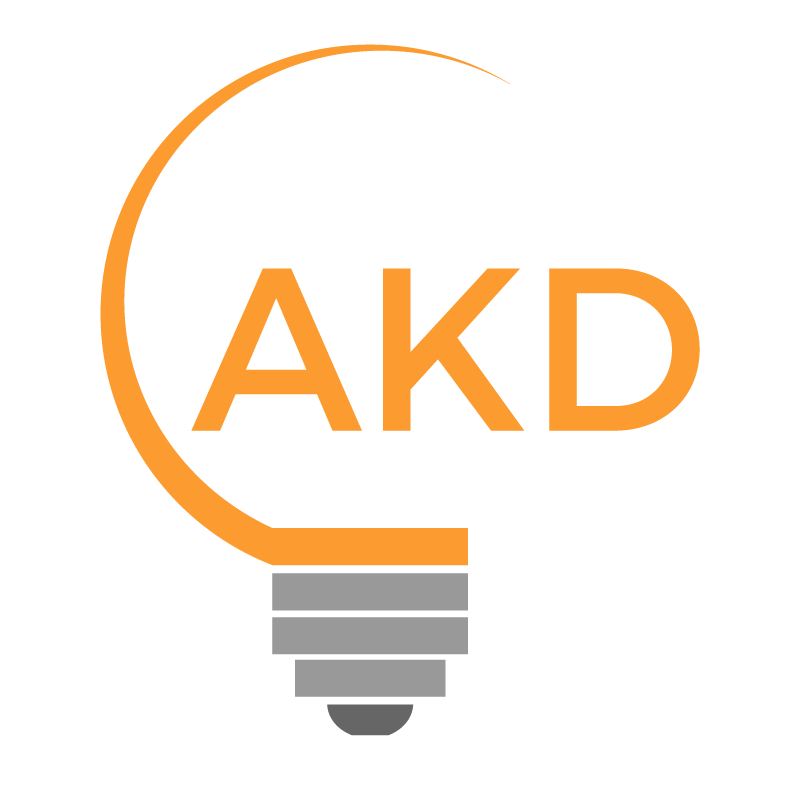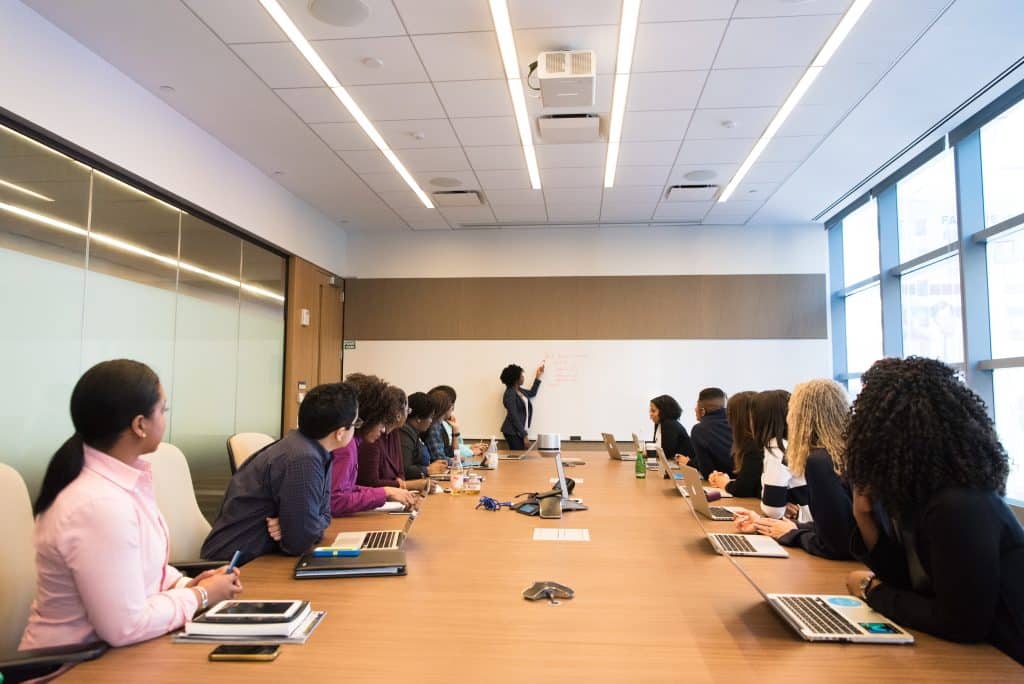Introduction
Society is evolving rapidly and it feels like often we can’t keep up. Our children will be doing jobs that we’ve never heard of. Business will be conducted in ways which for many of us are unimaginable. So if we don’t know what our world will look like in the next 5, 10, 20 years, how do we prepare our organisations for such uncertainty. What learning methodologies do we need to adopt to allow our people to design and create the future that truly optimizes the possibilities ahead of us?
The potential of people is huge and yet for the majority sadly squandered. In our organisations lies so much latent talent and yet we have failed to galvanise this and use it for the advantage of our businesses and society as a whole. How have the cultures of our organisations, and the way in which we learn and develop allowed for such inexcusable waste of human brilliance?
In this paper, we introduce the concept of Disruptive Learning as a tool to address the above. Disruptive Learning is about how we learn forward and not backwards. It’s not a complex idea, but it is unconventional and for many organisations, it will be uncomfortable and counterintuitive. However, nothing great was born from convention, so why are we so determined to cling to it? Disruptive learning is a mindset and thought process for designing learning experiences that challenge the norm, facilitate exploration and discovery. If you want to design the future, then at some point you need to disrupt your present.
The danger of learning backwards
Although there is much to be celebrated about how we learn in the workplace, we must acknowledge some key flaws.
Firstly our learning is heavily influenced by our formal education process. For many of us around the world, we experience an education system designed for an industrial revolution era. At its core is creating a workforce for compliance and conformity. You are rewarded for getting things right and penalised for getting things wrong. This is one of the biggest flaws in how we learn. Mistakes have rewarded us with some of the most significant inventions and breakthroughs that we benefit from now.
John Pemberton was a biochemist, who fought in the American Civil War and sustained a sabre wound to the chest. This led to an addiction to morphine. Pemberton sought to find a cure for this addiction. Instead, he discovered Coca Cola. Everyone reading this paper has probably used the invention created by Dr Spencer Silver. Dr Spencer Silver, a 3M scientist, was busily researching adhesives in the laboratory. In the process, he discovered something peculiar: an adhesive that stuck lightly to surfaces but didn’t bond tightly to them. The Post-it was created.
Percy LeBaron Spencer was working on magnetrons—high-powered vacuum tubes that generate short radio waves called microwaves—when he accidentally discovered microwave cooking. The engineer was doing his job as usual when he noticed that the candy bar in his pocket had melted. Quickly Spencer realized that it was the magnetron that was causing this phenomenon. By 1945, he had filed a patent for his metal cooking box powered by microwaves.
These are a few obvious examples, but millions more exist. If you reflect on your personal experience, you will probably find that profound learning experiences have often come from getting things wrong. So why do we struggle to embrace this truth?
Unfortunately, we are taught to fear failure. This is indoctrinated into us as children and remains with us throughout our personal and professional lives. So naturally, it’s a very present feature of many organisations we work for. We have to get things right. Our jobs, our reputations depend upon this. Therefore our learning processes reinforce this reality. Getting things right may provide gratification, but it depreciates learning opportunities and experience. You may get an immediate reward, but you won’t learn much from getting things right. Our most profound learning often when we got things wrong.
Your best future cannot be created by playing it safe and striving to get things right. And if we provide learning methodologies and opportunities that reinforce this, we do ourselves, our organisations and our societies a great disservice.
I was recently listening to Jim Rohn and he said something that resonated:
“Here’s why we don’t really reach into the future. We are trapped, either by regrets of the past or the routine of the present. (We are) so busy with the routine of the present that we don’t give much thought to designing the future. Or (we are) trapped by the past with regret of past losses, past failures, past mistakes and we relive them over and over again, not for the benefit of changing it for the future, but just because we feel that our lives have been less than favourable, simply because of all the things that have happened to us in the past”.
This statement is as applicable to an individual as it is to an organisation. Routine can consume all your energy. There is never enough time. We are constantly busy. We are being measured on the “now performance” and if “now” isn’t good enough then there could be serious consequences. Football managers have only a handful of games to get it right before a replacement is being sought. When your shareholders are your boss, there is constant pressure to deliver for the now. So where is the time and space for the future?
And let’s not forget the regrets that Jim Rohn referred to. Mistakes paralyse leaders and therefore the organisation. And when mistakes are perceived so negatively (and some rightly so), then bravery will retreat and “steady as you go” will come to the fore. Your focus will be on now and ensuring self-preservation rather than creating new spaces of opportunity and possibility.
We need to recognise the importance of now and optimising now. But we must understand the importance of the future and carve out time to think about this. We need to acknowledge the mistakes of old, learn, but move on. How do we move forward with the right balance?
Disruptive Learning
At the core of this paper is the question “How do we create a learning culture and platforms that allow our organisation’s intended future to emerge?”
The first thing we need to do is learn forward and not backwards. Convention can’t create your intended future. But disruption can. Disruptive learning is a method to enable the fullness of your future to emerge.
Disruption is now part of the language of business and gradually becoming part of the learning vernacular. But let’s be clear about what disruptive learning is. A dictionary definition of disruptive is to prevent something from continuing or operating in a normal way. For clarity, I am defining disruptive learning as:
A learning experience that radically challenges conventions and norms and provides the catalyst to new possibilities, opportunities and outcomes.
Disruptive learning has no predicted outcome other than if you embrace the experience and reflect deeply on the experience, something of immense potential could emerge. Professor Jules Goddard, a fellow at the London Business School helped to shape the concept of Disruptive Learning. He said it’s a challenging learning method that is deliberately deconstructive to allow for new thinking and possibilities to emerge. He continued there are aspects of disruptive learning that may be counterintuitive. Professor Jules Goddard said “ If you think it’s measurable, it’s not worth doing! The real value we bring by definition is immeasurable. We have a sense of whether something is important and making a difference. When you start to put numbers on it, the experience and the potential are distorted. Measures make it comfortable.
Uncomfortable..but let’s explore anyway…
The disruption is highest when the feedback is lowest. When a group of senior executives from France found themselves in a remote village in Mumbai, some simply didn’t want to be there. They were extremely uncomfortable and didn’t understand the purpose. They hated the lack of structure. But the journey didn’t end there and profound learning was the result. It was back in the hotel, in the moments of reflection and discussion that profound learning and ideas emerged, that was transformational for the individuals and the organisation.
Disruptive learning means that you must be courageous and be willing to look beyond the immediate feedback and trust in the process. The return on investment won’t necessarily come from the actual activity. It will probably come from the experiments that the experience stimulates. “What is the one question that comes from my experience that if we found the answer would have a profound impact on the organisation?” This means we will need to rethink how we evaluate a disruptive learning experience. Conventional measures of learning that we use in organisations will be too restrictive. The evaluation will be the experience, the impact and what emerges. This means courage and patience!
What does it look like?
Because Disruptive Learning is unconventional, I can’t give you a nicely presented package. And you shouldn’t want one. What we can do is share some examples of disruptive learning and some of the characteristics you should be seeking to include.
I asked Professor Jules Goddard about his most disruptive learning experience. He provided two examples:
Finding Your Voice in a Remote Village in Mumbai
“It was when I was at the edge. I spent a week in Mumbai, with executives from Danone. We found ourselves remote in a village with no agenda, other than to find our voice and hear the voices of others living very different lives from ours. I still remember the flavours. Some of the executives couldn’t understand why they were there and wanted to leave. We experienced extreme discomfort, physically and mentally. We found a health centre and a school. We taught at the school for a few hours. We placed ourselves in the minds of very different people for a while. Later in a luxury hotel, we had a sense of guilt and voyeurism, but we reflected on our discomforts and mental models. Those who didn’t want to be there suddenly got what’s going on.
Who is the Most Interesting Person you know?
On another occasion, Professor Goddard took a group of executives from Prudential to California and hooked up with Andre Norman. Andre Norman is also known as the Ambassador of Hope. Andre’s years were framed by crime and violence and led him to be sentenced to over 100 years in prison. Whilst in solitary confinement Andre had an epiphany, went from an illiterate to teaching himself law, and eventually won an appeal after 14 years. Professor Goddard team up with Andre Norman with a group of executives with the objective of “finding the most interesting person in the city”.
We went into the most dangerous parts of LT in a car. We drove around, when saw someone interesting, we stopped the car and ask the person “who is the most interesting person in the hood”. We met some remarkable people. We did this 5 times and ended up meeting a woman hosting 25 homeless people in a park. We talked 3-4 hours to this woman and those who were homeless. I recall it had a profound impact on HR Director. She stayed in contact with one of the people for at least one year after the experience.
Designing a Disruptive Learning Experience
The key thing to remember in your design is that you only create the framework and the spark to ignite the experience. The rest is down to those involved.
So what are some of the characteristics of disruptive learning experiences:
Discomfort
The common denominator for all disruptive learning experiences is discomfort.
Steve Murphy is the Managing Director of MTR Elizabeth line in London. He recalled having to deal with the most controversial industrial relations issue the industry had faced in a generation. On top of that, he had to face Bob Crow, one of the UK’s most formidable union leaders. Steve Murphy recognised the issue had the potential to destroy the company he had built and rip the industry apart. On reflection, he said that his most profound learning was when he was genuinely afraid. “It turned out to be really successful, but what made me focus and perform at a high level was fear”.
Chizoba Mojekwu, the former HR Director for the Central Bank of Nigeria, recalls a 9-day course at the Harvard Business School. She recalled she spent 3 of the days in tears (along with other colleagues). She noted that the pain was worth it for a profound learning experience that has never left her.
We are not advocating that you deliberately make people cry or construct scenarios with the intent of scaring people to death. But there must be discomfort. If you accept that convention will not allow your best future to emerge, then you need to create a framework for learning that places people in uncomfortable (but managed) circumstances.
Forget the classroom!
In our research, another common feature is that disruptive learning doesn’t take place in a classroom or sitting in front of a computer. It is more likely to take place in an unusual location with people you normally don’t engage with. Professor Jules Goddard participates in a village outside of Mumbai and to the suburbs of California, not normally reserved for senior executives of global brands.
Going with your gut!
A lot of the learning experiences I’ve developed for clients have been intuitive, lacked a lot of structure, but were unbelievable impactful. The parameters were outlined and within this space, we provide freedom to see what would happen.
Playfulness
One of the most powerful and liberating learning methodologies. It is the most natural form of learning. Playfulness has two key components, exploration and problem-solving. But when children begin their play, they don’t have a structure for what the issue is nor an intended endpoint. But through play, they discover both. We need to liberate those designing the future to play.
Carefully Constructed Chaos
Often disruptive learning is an experience that is in the moment and without rehearsal. We need to help people recognise, reflect and truly embrace these experiences to optimise them.
We can also construct these experiences. A great way to describe it is Carefully Constructed Chaos. This means carefully constructing the parameters of the experience, but allowing the middle (the content, the chaos) to emerge.
Also remember the experience itself is only one component of the experience. True learning will often follow through reflection and asking deeper, more challenging and meaningful questions than would have been previously generated.
To carefully construct chaos you first need to understand what normality is to those involved. You need to gain some insight into the individuals involved to gain some understanding of the professional and personal challenges they have experienced. I work with an amazing charity, Breaking the Silence, which works with victims of domestic violence, forced marriage and human trafficking. I have included them in the design of some leadership programmes because I know that participants will find it hugely uncomfortable and transformative. But if there are victims/survivors of domestic violence then it would not fulfil a chaotic dimension.
Often these are constructed engaging with people outside of the participants’ normal social field. The London Business School has facilitated sessions where former gang members and ex-prisoners have worked with senior executives, allowing them to explore London in ways that for them are unimaginable.
The Role of Technology
Technology is now an inextricable part of life, including learning. Therefore we need to understand its role in disruptive learning.
Artificial Intelligence is a good starting point. Artificial Intelligence is “The theory and development of computer systems able to perform tasks normally requiring human intelligence, such as visual perception, speech recognition, decision-making, and translation between languages.” (1) Amazon Web Services also mentions learning, problem-solving and pattern recognition in their definition.(2).
AI has four key components: human thinking, rational thinking, human acting and rational acting. AI wants to think like a human, but move beyond so that it can think and act in the most rational, optimised way. This is powerful, but can it be disruptive? If we agree that human creativity is responsible for the future, can AI create the future or merely optimise the here and now. No doubt geniuses are working hard to achieve this.
What technology provides is accessibility and connectivity. We can access information in ways which are incredible and connect with people and ideas that were inconceivable even 10 years ago. But this does come with a health warning. Technology can democratize information. However, the notion of personalisation can be counterintuitive to democratisation. The architects of social media seek to understand your profile and preference and then push information to you that suits who your persona says you are. This is particularly prevalent in our politics, where we see how political parties are using social media to carefully pinpoint campaign information that suits your profile.
Netflix will suggest you may want to watch this, and more often than not we trust these recommendations. Personalisation may make it easier to sift through the noise, but it can also make us lazy. Disruptive Learning requires you to be intentional, going beyond what Facebook or Twitter or YouTube predict you will engage with. Disruptive Learning requires you to deliberately seek out new ideas and new people.
Who is disruptive learning for?
Disruptive learning is a tool that should be used by anyone who has responsibility for imaging and creating the future for an institution. Here we focus on organisations. (corporate, public or voluntary). But it can be applied on a micro lee
When should you apply Disruptive Learning?
Disruptive Learning is a tool that you should be used sparingly, otherwise, you run the risk of losing its uniqueness and unconventionality. I think that two great opportunities for disruptive learning are:
- Developing new and emerging leaders
- When there is deliberate space for future planning
When working with new and emerging leaders, you want them to be responsible for the present, but more importantly the future. They are the talent that are likely to have some responsibility for governing the future, so surely they should have a stake in creating it. By applying disruptive learning in their formative years as leaders, you create a foundation, which will be profound and shape how they lead.
When your organisation is embarking on planning its, be brave enough to rip up the rule book, start with a blank sheet and facilitate a disruptive learning experience. It will remove the barriers of convention and allow them to explore possibilities that other “workshop sessions” will potentially inhibit. From the experience, questions and hypotheses will emerge that will allow for a much fuller experience of future planning.
Akin Thomas is the founder and CEO of AKD Solutions
Contact us if you want to disrupt to create greater, click here.



















